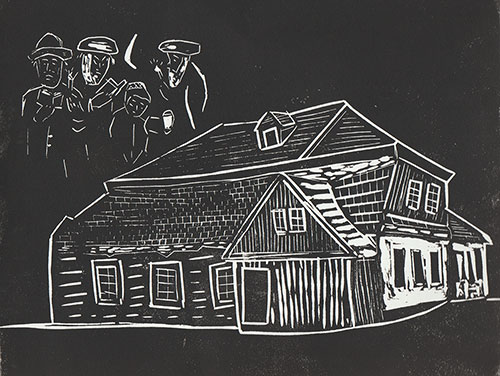Lost Treasures: The Wooden Synagogues of Eastern Europe The Artwork of Bill Farran
Sobkow, Poland - Original Linocut
Sobkow, Poland - Original Linocut
Yiddish name: Sobkov
Sobkow was founded as a city in 1563 by Grand Treasurer of the Crown Stanisław Sobek. The first mention of Jews was in 1662 when there were four Jewish taxpayers. After the third partition of Poland in 1795, Sobkow became part of the Congress of Poland, which was under Russian control.
During the first half of the 19th century Sabkow experience rapid growth. By 1858 Jews made up 60% of the population. In 1858 the shtetl had a wooden synagogue, rabbi’s house. Mikvah, Cheder, kosher slaughterhouse and a cemetery. The nobleman who owned the shtetl took part in the failed Uprising of 1868. The Russians removed the noblemen and downgraded Sobkow from a town to a village. Fairs could no longer be held causing the shtetl to decline. Sobkow Jews began to leave for larger towns and America. During World War I much of the town was destroyed by fire.
On August 28, 1942, the Sobków Jews were deported to the ghetto in Jędrzejów and after several days, to the death camp in Treblinka.
Purchase a print
Original linocut prints are 8x10 inches, and are available either unmatted or in an 11x14 matte.
I also offer matted 5x7 digital prints. These prints are created from high-res digital images and come in an 8x10 matte.
